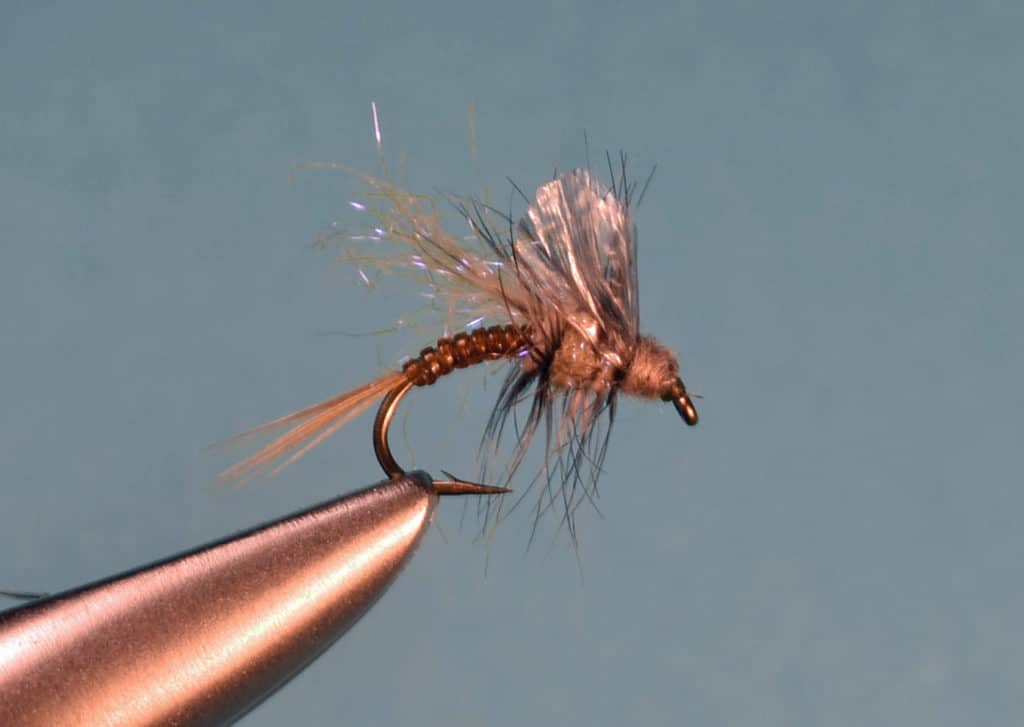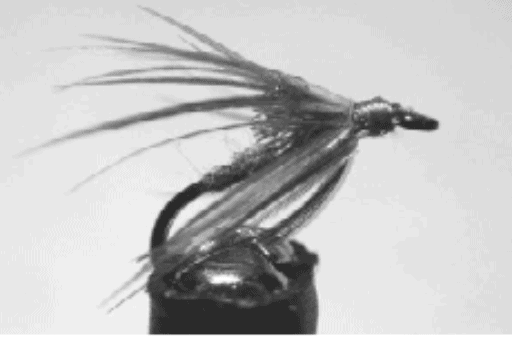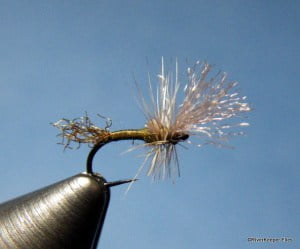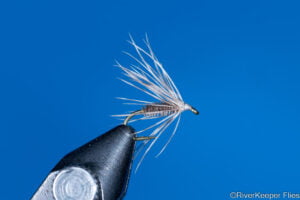This week’s Throw Back Thursday Fly is Stalcup’s Cripple Emerger TBT.

You may have seen a couple Shane Stalcup flies in previous TBT posts. I received a Comment of appreciation for highlighting Shane’s flies from a friend of his, Jimbo Busse. I always enjoy receiving Comments about my TBT posts because I’ve stirred a thought or two from one of my RiverKeeper Flies readers. Bringing back good memories and sharing the history of fly fishing is the reason I post TBTs each week.
Jimbo offered to provide an image of a few Stalcup flies for me to use in my Throw Back Thursday Fly posts. I really appreciate his efforts and willingness to share a little fly fishing history with me and you.
Stalcup’s Cripple Emerger can be found in Shane’s book entitled Mayflies “Top to Bottom” on page 142. It’s another fly utilizing Medallion sheeting material for the wings.
Stalcup provides the following insight as he developed the fly:
When it comes to emergers and cripples, the curved hook is very useful. The idea behind using the curved hook for emergers comes from wanting the butt of the fly to sink below the thorax and the wing portion makes it look as though the fly’s crawling out onto the surface.
In addition, the D-rib body provides transparency and segmentation of the natural insect.
The following quote is some background about Jimbo and Shane met.
In the early 80’s my friend Ray Sapp and his wife Rhonda opened a fly shop in Lakewood Colorado called “The Colorado Angler”. I worked there part time teaching fly tying, rod building, fly fishing school and guiding. Shane was commercial tying and sold his flies in Ray’s shop. That’s where we met. The Colorado Angler had a booth at the International Sportsman Expo for many years and both Shane and I tied in their theater. We didn’t fish together a lot but when we did it was western slope lakes like Lake John, Delaney Butts Lakes, and Cowdrey Lake. I used a number of Shane’s lake patterns like his damsel nymph and adult. But we all had our own special flies we had faith in. Shane had a leech pattern we all used and modified to make it more durable and easier to tie. We still use it today. My sister lived in north Denver just a few minutes from where Shane lived so I would visit him a lot and we would hash over patterns and technique and materials. At one time he applied for work where I was as a designer and draftsman. I worked for a civil engineering and land surveying firm.
JIMBO BUSSE
I didn’t know of Jimbo before receiving his Comment, so I asked him to provide a little background about himself. Here’s what he wrote:
I live in Colorado Springs, Co. have been here for 12 years now. I’m retired and spend most of my time fishing and hunting with my wife. My dad would take my brother and I fishing every weekend mostly to Lake McConaughy in Nebraska. After I got home from the Vietnam war I moved from NE Colorado to Denver in 1969 and started fly fishing with Ray Sapp and another friend from back home. We fished the South Platte a lot and fished the Blue River and the Eagle River when we could. I met Sylvester Nemes at one of the ISE shows and picked his brain about wet flies and soft hackles and now I have become one of his addicts. I love wet flies and use them a lot in both rivers and lakes. Feb 9th I will be tying at the West Denver TU annual fly tying clinic in Lakewood. This will be my 35th year at the event. There are about 40 to 50 tiers from all over the region tying every style of fly you can think of.
Thanks again Jimbo for providing information about Shane. I really appreciate your efforts.
You’ll see a few more of Shane’s flies in the near future, thanks to Jimbo.
Enjoy…go fish!






the fly tying community is a wonderful thing… It’s fortunate that there are so many people who met, fished with, or interacted in some way with folks like Sylvester Nemes, Stalcup, and many other of the originators of flies we use today and are willing to share their knowledge and insights into those patterns.(sorry for the poor english, my editor daughter would hate that run-on sentence)
Thanks for posting your TBT flies. They always give me ideas to tie and present flies to the fish around here that may not have seen some of those patterns in a while…